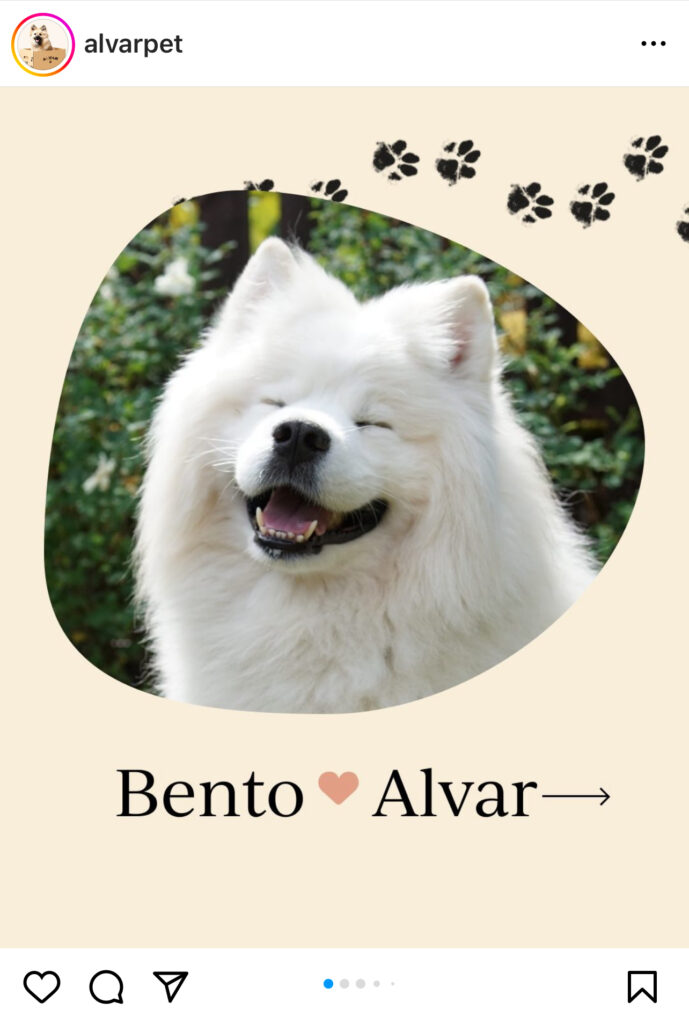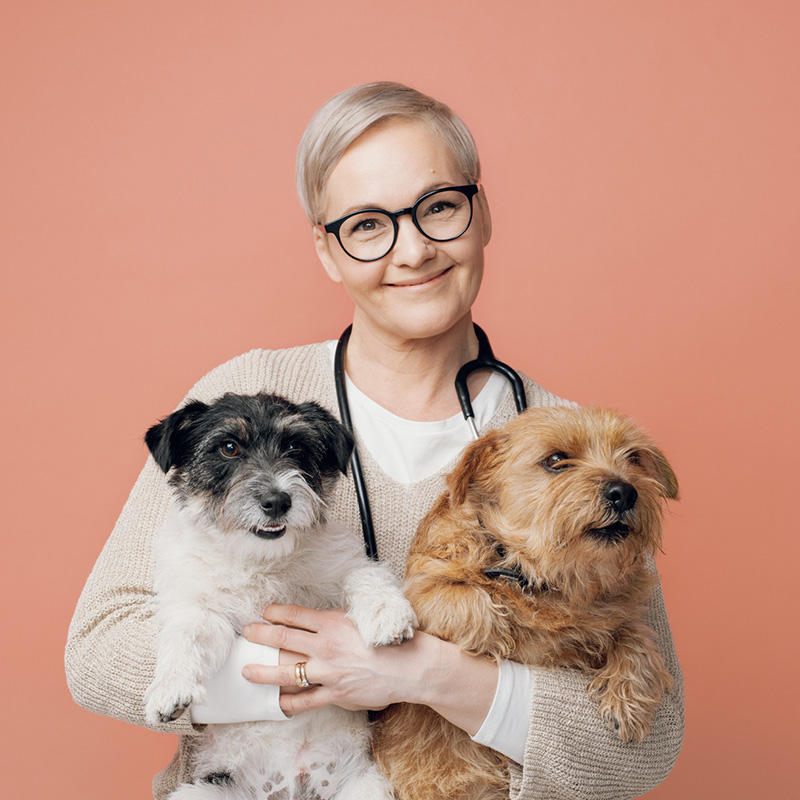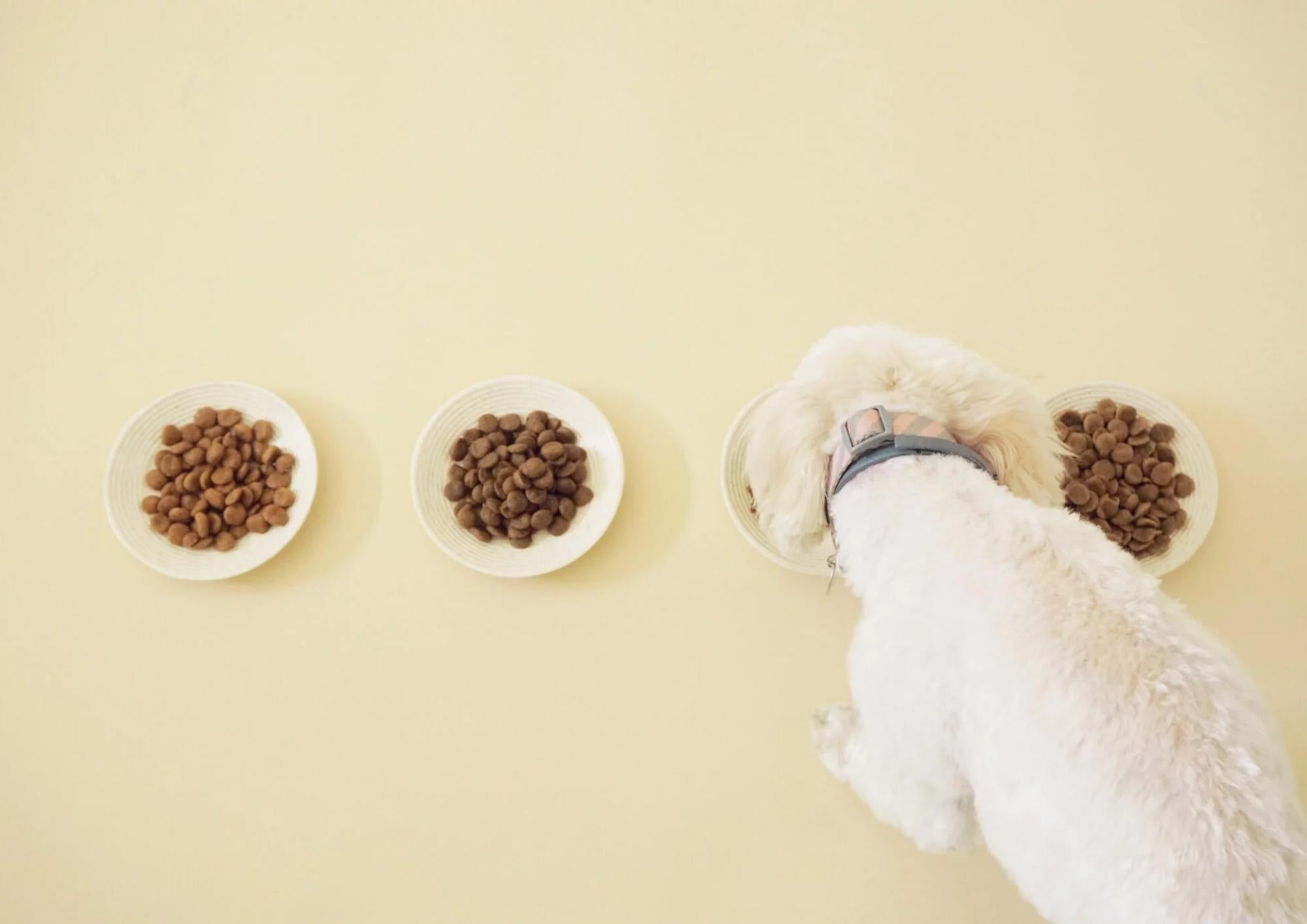When a dog is scratching its skin or licking its paws, many dog owners turn their attention to diet. Diet indeed plays an important role in the health of a dog’s skin.
Contrary to popular belief, atopy is more often behind skin symptoms than actual food allergies. Sometimes allergic skin diseases go hand in hand, and the dog reacts to both certain food ingredients and environmental allergens. In such cases, both must be taken into account in treatment and feeding.
There may also be many other reasons behind skin symptoms, such as external parasites or various hereditary skin diseases, so a symptomatic dog should always be examined by a veterinarian.

Food allergy
Symptoms of a food allergy include itching and redness of the skin, as well as ear infections, and it can also be associated with digestive issues. Diagnosing a food allergy involves a so-called elimination diet, which is carried out according to the instructions of the treating veterinarian. The idea of the elimination is to exclude all ingredients from the dog’s diet that it may have previously been exposed to. There are ready-made special diets for elimination, or the diet can be composed of ingredients the dog has never eaten before.
If symptoms improve during the elimination diet, the allergy is confirmed by returning to the previous food, which should also bring back the symptoms. Later, it is possible to try identifying individual suitable ingredients by adding one ingredient at a time back into the diet. In clear cases of food allergies, symptoms stay away in the future by avoiding the allergenic ingredients.
Classic food allergy is related to proteins or glycoproteins in the food. The allergic dog’s body has produced antibodies against a previously encountered protein, and a new exposure leads to allergic symptoms. Many common ingredients like poultry, beef, dairy products, wheat, and corn can cause allergies, but avoiding single ingredients “just in case” in the diet of a healthy dog offers no benefit.
There are special diets for allergic dogs that use carefully selected protein sources and/or proteins that are treated in a way that they do not trigger an allergic reaction (hydrolyzed protein).
Atopy
A more common allergic skin disease in dogs than food allergy is atopy, where the skin reacts to environmental irritants (such as pollen, dust, or mold) with symptoms very similar to food allergies. Diagnosis of atopy is based on history, typical symptoms, and exclusion of other causes, such as with an elimination diet. Existing allergy tests are not used to diagnose atopy, but they can provide additional information on what the dog is sensitized to and help in planning potential desensitization treatments.
The symptoms of atopic dogs do not improve by avoiding any specific food ingredients, but the right diet still plays an important role in improving the dog’s condition alongside other treatments and medications. Since the skin’s barrier functions in atopic dogs are weakened, nutrition focuses on supporting skin health.
Diet supporting skin health
A diet that supports skin health should include plenty of protein to support hair growth and skin regeneration, omega fatty acids to support the skin's lipid layer and reduce irritation, and vitamins and minerals to support regeneration and moisture balance. The easiest way is to choose a high-quality prepared food designed specifically to support skin health. Sometimes, for example, fish oil can provide additional benefits in supporting the skin.
It’s good to note that dietary changes show effects on the dog’s skin with a delay. Visible improvements are often seen only after about two months of use, when the skin renews and new coat starts to grow.
In many cases, the dog may have both a food allergy and atopy, in which case the diet must be both hypoallergenic and otherwise supportive of skin health. In these situations, the best solution is often found in special diets.

Bento’s story
Samoyed Bento suffered from skin symptoms after moving abroad. Read on our Instagram how Bento’s symptoms eased with a dietary change and see Bento’s amazing before-and-after pictures here.
Alvar’s nutrition advice
Need help with feeding problems? Welcome to Dr. Alvar’s consultation – that is, with veterinarian and Head of Product Development Henna Söderholm! Alvar’s nutrition advice is free for all current and potential future customers. Book your own nutrition consultation time!





